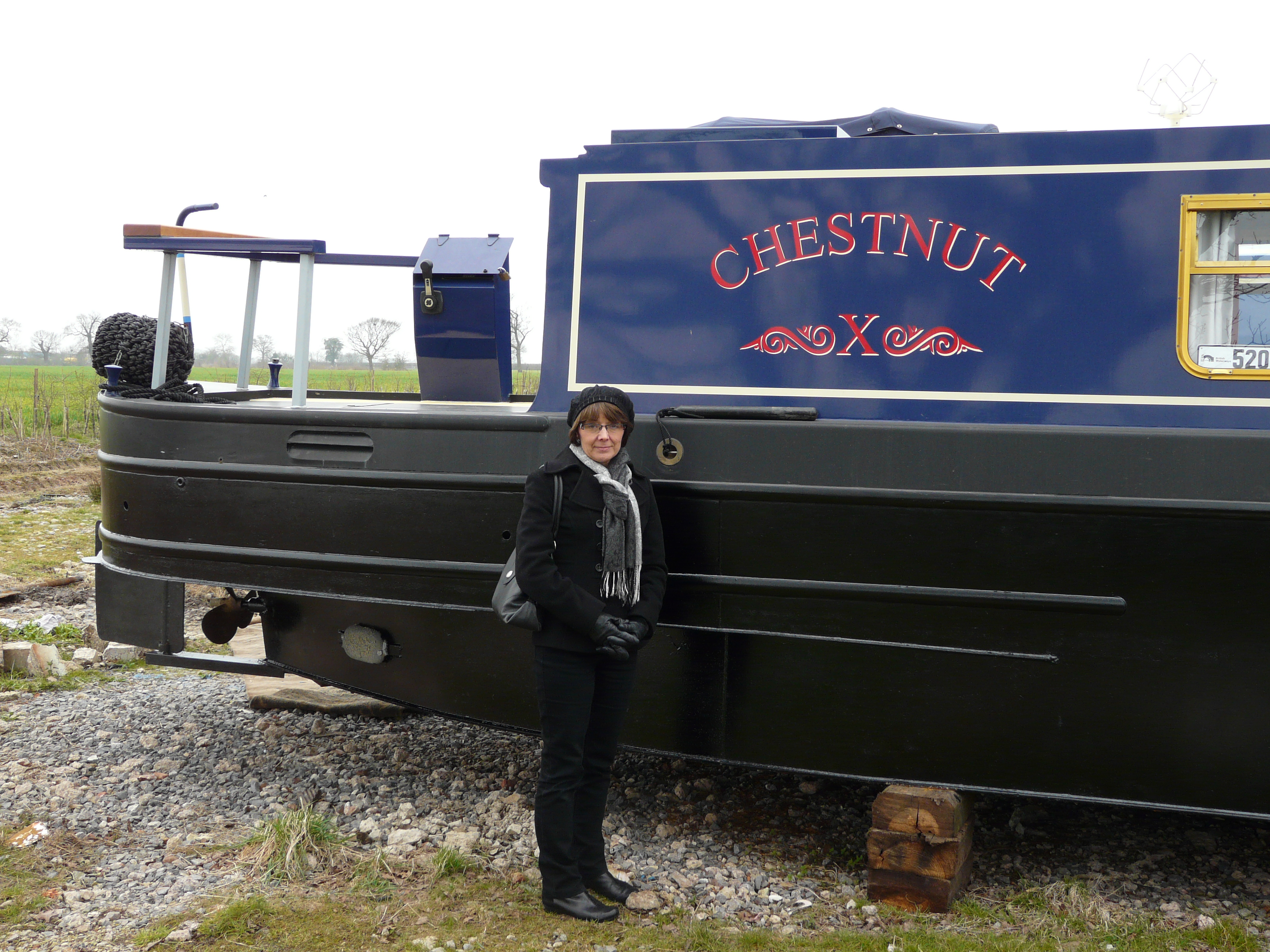Every Narrowboat has a swim. But what is it?
This shot of the engine room also shows Chestnut’s “swim”.

The boat is propelled forward by the turning propeller sucking water from in front of it and forcing that water out in a stream behind it. All this stream of water passes over the rudder that is normally edge-on to that stream and so does nothing. But if the rudder is moved from that central position, to the left or right, the stream of water is forced to the left or right and the boat turns. This is why the rudder has absolutely no effect when the propeller isn’t turning or, worse, is turning backwards.
Because the propeller has to suck water from in front, there has to be a channel to bring in that water without too much disturbance. That is the swim.
It’s an area of the boat’s keel that narrows under the water so that water can pass more easily over the propeller.
When in the water Chestnut has a draft of 560mm or 22 inches. The shot below shows the crew standing by Chestnut, the water level normally comes to the rubbing strip visible along the boat at roughly the level of my wife’s elbow. So the swim is entirely under water.

You can see from the engine room picture where the propeller shaft comes out the top of the engine, passes through a “stern gland” and then disappears out the back of the boat to the propeller. Every boat has a stern gland, it allows the propeller shaft to rotate under water while keeping the water from entering the boat.
But if the stern gland ever does fail, that’s what the bilge pump is for. The bilge pump is located on the floor at the end of the green pipe directly underneath the stern gland.
The large grey box with the lid fixed with a locking bar is known as the weed hatch. It is directly above the propeller, this allows the prop to be cleared of weeds, plastic bags, or any other junk thrown into the canal, that has wrapped around the prop and stopped it working. Our worst case was a wire-frame mattress! The bottom of the weed hatch, where it is welded to the top of the swim, is in fact under water, while the top is above the water level. The water comes roughly to where you can see the white mark. The lid needs the big locking bar because there is enormous pressure on the lid once the propeller starts moving. In fact there is a large metal plate fixed to the lid that lowers in to the water to the level of the swim so that the weed hatch does not effect the flow of water around the propeller.
Also visible on the right hand vertical wall of the swim is the keel tank. This is a water tank, about two inches wide attached to the swim, and is used to cool the engine. It is the equivalent of a car’s radiator. You can see the thick black coolant pipes attached to its top and bottom.